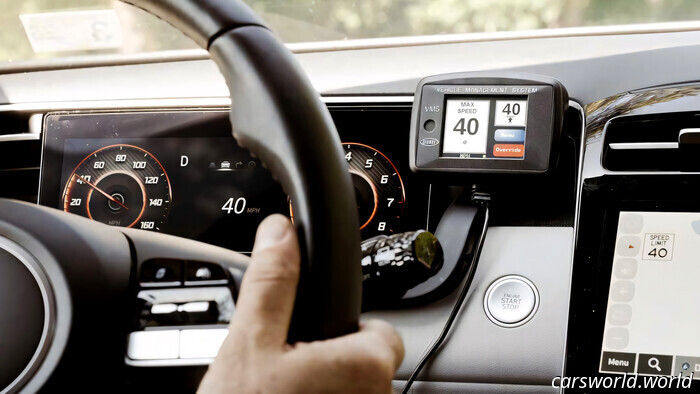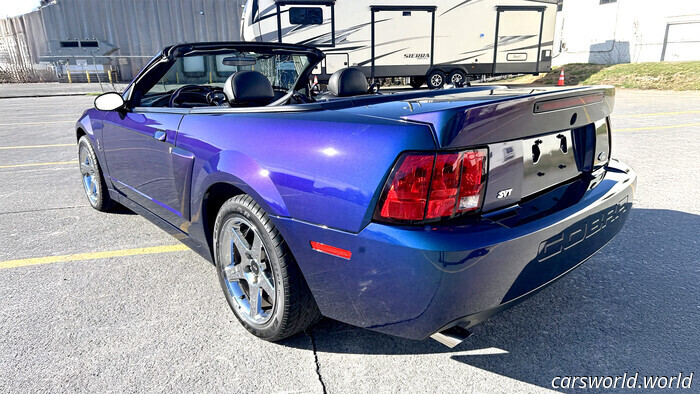
Observe how Gordon Murray Automotive tests the T.33 Supercar for safety measures.
Gordon Murray Automotive
Gordon Murray Automotive, based in England, is finalizing its V12-powered supercar called the T.33. Available in both coupe and convertible versions, the T.33 is a low-volume street-legal vehicle, necessitating a comprehensive range of safety features for homologation. It is not designed as a stripped-down track car. The brand is showcasing some of the rigorous tests the vehicle undergoes to ensure it is prepared for real-world conditions.
A video released by Gordon Murray Automotive illustrates how the engineers program the airbags to determine when to deploy (and, importantly, when not to deploy), and this process is much more complex than one might think. It goes beyond simply inputting lines of code into one of the car's computers. The process includes practical track testing in harsh conditions that the average T.33 is unlikely to experience.
To begin with, the fundamentals: the airbag control unit is the electronic component responsible for activating the airbags upon detecting a collision. It partially relies on data from accelerometers, which recognize sudden changes in the vehicle's speed. However, airbags should not deploy every time the car slows down. For instance, in a collision with a truck on the highway, you would want the airbags to activate, whereas hitting a curb in town likely does not require that protection.
The most effective way to teach the vehicle to distinguish between a truck and a curb is to drive it into a curb—and watching a sleek supercar intentionally crash into an obstacle may be hard to watch. The testing gets even more intense; in addition to traversing rough surfaces, such as cobblestones often found in European cities and washboard roads at 55 mph, the T.33 prototype also executes a jump off a ramp covering 26 feet in the air, strikes a 176-pound duffel bag at 45 mph to mimic an impact with a boar, and drives directly into a substantial pile of gravel, surprisingly going right over it.
It does not emerge unscathed. The impact with the boar-resembling bag, dubbed Ian by the engineers, damages the front bumper and punctures one of the radiators. Colliding with the curb shatters a brake rotor, and there are countless scratches on the various body and underbody panels. Although Gordon Murray Automotive repaired the damage, the rebuilt car will continue to serve as a powertrain calibration mule for engine testing.


Другие статьи
 Вирджиния Хочет стать Первым штатом, Который Введет Ограничения Скорости Для Лихачей | Carscoops
Скоро у обычных спидеров не будет физической возможности передвигаться на своих автомобилях
Вирджиния Хочет стать Первым штатом, Который Введет Ограничения Скорости Для Лихачей | Carscoops
Скоро у обычных спидеров не будет физической возможности передвигаться на своих автомобилях
 В Первом Квартале Dodge Продал Больше Старых Challengers И Charger, Чем Новых Электромобилей Daytona | Carscoops
И это несмотря на то, что старые модели Charger и Challenger сняты с производства с конца 2023 года
В Первом Квартале Dodge Продал Больше Старых Challengers И Charger, Чем Новых Электромобилей Daytona | Carscoops
И это несмотря на то, что старые модели Charger и Challenger сняты с производства с конца 2023 года
 Продажи Corvette упали на 21% В Первом Квартале, В То время как продажи Colorado выросли на 73% | Carscoops
В целом, продажи GM в первом квартале выросли на 16,7% по сравнению с аналогичным периодом прошлого года и составили 693 363 поставки
Продажи Corvette упали на 21% В Первом Квартале, В То время как продажи Colorado выросли на 73% | Carscoops
В целом, продажи GM в первом квартале выросли на 16,7% по сравнению с аналогичным периодом прошлого года и составили 693 363 поставки
 Ford Выпустил Всего 495 Таких "Мустангов", А У Этого Пробег Чуть Больше 2 Тысяч Миль | Carscoops
Этот малолитражный Mustang SVT Cobra окрашен редкой заводской краской Mystichrome с эффектом изменения цвета
Ford Выпустил Всего 495 Таких "Мустангов", А У Этого Пробег Чуть Больше 2 Тысяч Миль | Carscoops
Этот малолитражный Mustang SVT Cobra окрашен редкой заводской краской Mystichrome с эффектом изменения цвета
 Hyundai отменяет Свой Трехлетний план бесплатного Технического Обслуживания
С 2020 года клиенты Hyundai пользуются одним из самых щедрых в отрасли планов бесплатного технического обслуживания при покупке нового автомобиля. Теперь, похоже, этому приходит конец.
Hyundai отменяет Свой Трехлетний план бесплатного Технического Обслуживания
С 2020 года клиенты Hyundai пользуются одним из самых щедрых в отрасли планов бесплатного технического обслуживания при покупке нового автомобиля. Теперь, похоже, этому приходит конец.
Observe how Gordon Murray Automotive tests the T.33 Supercar for safety measures.
GMA took its V12-powered supercar off ramps and into gravel mounds, all in an effort to train the car's airbags on when to activate and when not to.
